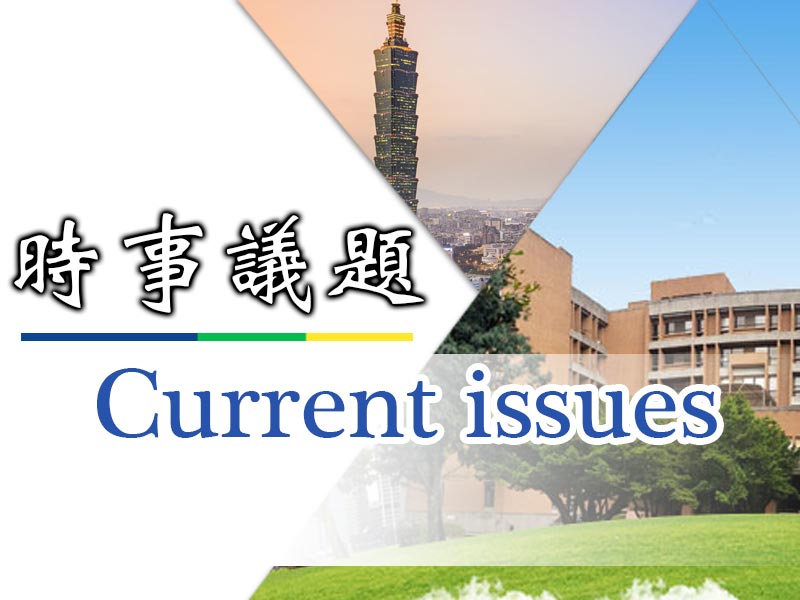Taiwan should seek partnerships
The Regional Comprehensive Economic Partnership (RCEP) agreement, initiated in 2011, was finally signed at an ASEAN summit on Nov. 15.
The RCEP was created mainly by integrating the five free-trade agreements of ASEAN.
However, due to the big differences between the agreements and the opinions of member countries, negotiations progressed slowly. During the course of negotiations, seven RCEP members joined the Comprehensive and Progressive Agreement for Trans-Pacific Partnership (CPTPP), while several free-trade agreements also took effect among the members.
The biggest regret for the RCEP might be India’s withdrawal during the later stages of negotiations due to concerns about the pact’s effects on the country. Although the RCEP still welcomes India to return at any time, it is unlikely that it will join in the near future.
Although India is missing from the agreement, the GDP and trade value of the 15 member states still account for about 30 percent of global GDP and one-third of the global population — both of which are higher than the CPTPP’s figures.
The RCEP also connects China with Japan, and Japan with South Korea, thus creating a link that was missing, as there were no free-trade agreements between these countries. Therefore, it reduces the need for free-trade agreements between them.
In particular, since Japan and China are the only two countries in the RCEP that had not entered into an free-trade agreement with each other, China offers Japan the largest tariff reductions.
Coupled with the fact that Japan is the RCEP member country that exports the most to China, Japan would undoubtedly be the country to benefit the most from the RCEP.
Although neither the breadth nor the depth of the RCEP is as far reaching as that of the CPTPP, there would still be zero tariffs on more than 90 percent of products in the goods market.
The service industry market, which was relatively closed in the past, would also be opened to a great degree. It is foreseeable that the RCEP would accelerate the deepening of regional economy and trade.
This is probably particularly true for China. Given the US-China trade dispute and the effects of the COVID-19 pandemic, many companies have withdrawn from China and are seeking to decouple from the “red supply chain.”
The RCEP undoubtedly provides China with an excellent stage to take countermeasures to these developments. Although the agreement is mainly an integration of ASEAN free-trade agreements, China, whose GDP accounts for nearly 60 percent of the RCEP’s total GDP, holds a pivotal position.
As the RCEP’s members are important countries in China’s Belt and Road Initiative, Beijing is likely to use the pact to deepen its economic and trade links with these countries to resist the global decoupling from China.
It would do so based on its economic scale, and using market deregulation as an incentive and industrial cooperation as a means.
The RCEP would also prompt the US to strengthen its connection with Asia as a counterbalance to China. Returning to the CPTPP, promoting supply chain cooperation and strengthening the Indo-Pacific strategic layout might be possible options for the new administration of US president-elect Joe Biden.
RCEP member countries account for nearly 70 percent of Taiwan’s exports. Since the free-trade agreements between RCEP members have already taken effect, they have already had an effect on Taiwan, which is still ongoing.
Once the RCEP implements comprehensive tariff cuts, that would have an effect on Taiwan in the form of another wave of trade redirection.
In addition, because the RCEP country of origin rules can help strengthen the integration of the regional supply chain and attract foreign investment, it would have a crowding-out effect on Taiwan.
Given cross-strait relations and China’s influence on the RCEP, joining the RCEP is out of reach for Taiwan, while Taiwan’s accession to the CPTPP and the establishment of bilateral free-trade agreements would also be difficult to realize.
Although Taiwan’s participation in regional economic integration is being hindered, it should continue to seek opportunities to break through. In response to the drastic changes in the global economic and trade environment, all countries seek to organize supply chain alliances to ensure industrial safety, forming a new model of regional economic cooperation.
Taiwan should make use of its own manufacturing advantages to cut into the supply chain alliance system, and adopt flexible region-to-region and industry-to-industry cooperation as a way to bridge the gap caused by not being able to participate in regional economic integration.
Liu Da-nien is director of the Chung-Hua Institution for Economic Research’s Regional Development Study Center.
Translated by Lin Lee-kai
source of Taipei Times on Wed, Nov 25, 2020 page8


